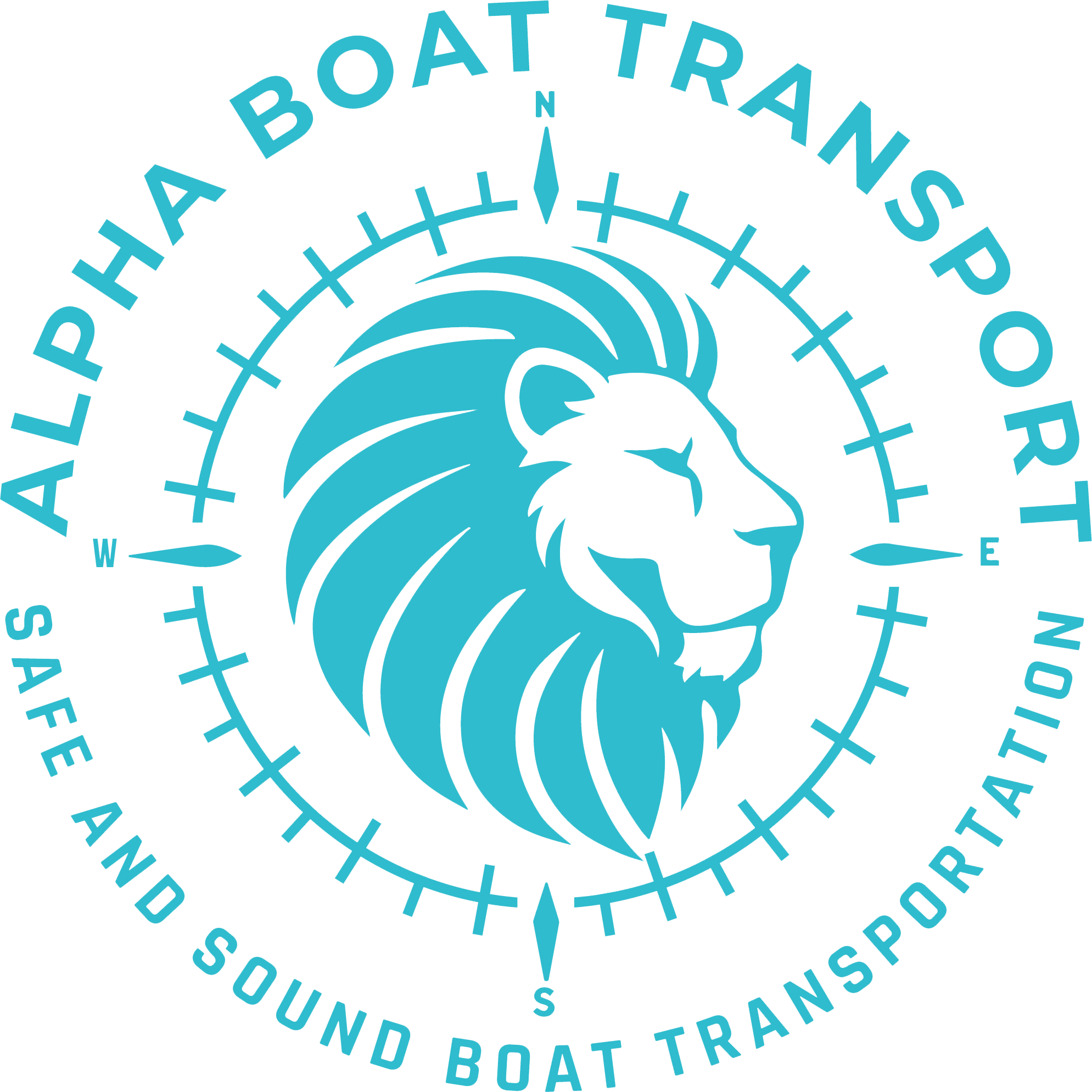Why Overland Regulations Are Getting Tighter in 2025
Listen, here’s what’s really going down… Starting in 2025, getting your boat from Point A to Point B across state lines just got harder—especially if we’re talkin’ about anything wider than 8.5 feet. Scroll through the latest industry reports and you’ll see this: 68% of U.S. states are now enforcing stricter oversize load permits for boats, compared to 55% in 2023. And the kicker? States like Florida are pulling the rug out from under transporters with new surprise requirements like mandatory route surveys for boats wider than 14’6”. Yeah, caught a lotta folks flat-footed.
If you’re wondering what’s sparking the clampdown, it’s aging infrastructure—bridges and tunnels that were never designed to handle your 35-footer on a triple-axle trailer. According to this recent industry report on small boats boat transport, new regional laws are more fragmented than ever. Meaning? Boat owners gotta navigate a chaos cocktail of permits, escort rules, axle configurations, and scheduling logjams.
Bottom line—if you’re planning to move your beauty in 2025, you need to plan smarter, sooner, and with the right outfit. Just wingin’ it ain’t gonna cut it anymore.
What Small Boats Boat Transport Means for You in 2025
So what’s the real boots-on-the-ground impact for owners of center consoles, pontoons, and other small-to-mid-sized vessels? Well, start with permit changes. A boat wider than 8.5 feet is now considered “oversize” in most states—some of which are now enforcing rules they never paid attention to before. We’re seeing loads over 10 feet needing escort vehicles in New Mexico while North Carolina’s holding at the 10-foot exemption, at least for now.
The width, yes—it matters big time. So does the trailer. California, for instance, wants to see your axle weight distribution before approving your oversize permit. That’s not something most weekend warriors are ready for. I recently overheard a guy at the marina in Maryland who lost his insurance coverage mid-haul because his transporter didn’t file one of those new intermodal permits on time. You don’t want that to be your story.
You want the safe route—get paired up with a transport specialist that knows each state’s list of gotchas cold. Otherwise, every mile becomes a new chance to get clipped by a rule you didn’t know existed.
Mid-size boats? They’re especially vulnerable now. Wide enough to trigger regulation headaches; small enough that many owners think DIY is still possible. Not in 2025. Trust me.
How Local Rules are Tripping Up Long-Distance Haulers
Here’s the part I wish more folks understood—every state’s got its own ideas about what’s “safe.” And now that the feds are pushing responsibility down to the state level, you’ve got different permit lengths, vehicle escort rules, hours-of-transport restrictions, and even weekend blackouts scattered across the map.
Take Texas—where they allow daylight-only hauls, no matter if you’re crossing 20 miles or 1,200. Flip over to Georgia, and they’ll give you a two-day oversized permit… as long as you’re on their approved routes and clear out by Sunday.
If you’re planning a coast-to-coast haul, say New Jersey to Florida? You need a transport plan that adapts not just to paperwork, but also timing, weather patterns, and bottleneck bridges. Been there, plotted that.
Speaking of New Jersey to Florida, check out how boat transport from New Jersey to Florida is evolving right now.
Permit Pitfalls: The Top 5 Mistakes Boat Owners Still Make
1. Not checking each state’s width and height limits
2. Assuming one permit covers the entire trip
3. Failing to inspect trailer configurations against new axle standards
4. Ignoring state-specific escort vehicle requirements
5. Letting your boat insurance policy lapse mid-transport
I mean, come on—permit mistakes are not just paperwork. Miss one and you could void your insurance entirely. Most policies now require verified DOT compliance. The fine print’s got sharper teeth than ever.
Got a Catamaran? Good luck getting that beast past new Georgia restrictions without an escort and a surveyor. Before you move anything wider than 12 feet, give a look at this solid Catamaran Transport Checklist to see what you’re up against.
New Trailer Prep Standards Everyone Needs to Know
You think your trailer’s road-ready? Let me tell you something—2025 isn’t messing around. DOT inspections are getting more aggressive. Brakes, tow chains, light systems—all need to be DOT compliant. What passed muster in 2022 could cost you big now.
A big transport outfit I know just had three trailers red-flagged by Idaho State Police because the rear signal lamps weren’t double-confirmed. You’d better believe that cost ’em a week’s delay and two angry clients. Pre-inspection protocols are the key to surviving these newer standards.
Need to update your preparation checklist? Peek at Alpha’s updated Boat Transport Preparation Guide to make sure your rig measures up.
Why Choosing the Right Transporter Matters Now More Than Ever
Now here’s the kicker—you may not be able to handle this alone anymore. No offense, but unless you’re a logistics expert with multi-state permit experience and route mapping tech, you’re in over your head. This ain’t a shrinking market, but it’s a tightening one.
According to Alpha Boat Transport, they’ve handled over 12,500 loads in the past decade, and even they’re constantly adjusting to new permit matrices monthly. Their average planning window shifted from 3 days to 7…and that’s if nothing goes sideways. That’s the reality, not marketing spin.
If your transporter isn’t using automated routing systems with real-time DOT updates, backed by a support team working nights and weekends, then buddy—you’re wasting time and putting your boat at risk. Want a crew that knows Florida route surveys, Oregon tunnel height limits, and Colorado axle spacing? Start here: Alpha’s Transport Services
Inside the Numbers: Key Trends for Boat Hauling in 2025
Get this:
– Average permit wait time has increased by 65% compared to 2022
– Escort vehicle costs are up by 28% due to fuel prices and regulatory insurance
– 92% of major interstate corridors now require defined height confirmations
Yeah, that means no flying blind across state lines anymore.
You want the smoothest long haul experience? Read through this expert walk-through on Long Distance Boat Hauling. You’ll thank me later.
Oh, and one more thing. If your boat has any sort of customization—arch extensions, keel wrappers, custom T-tops—you absolutely MUST declare that upfront. An extra 4 inches in height could make or break your entire planned haul. Period.
Frequently Asked Questions
What size boat requires a permit for transport across state lines?
If your boat exceeds 8.5 feet in width or 13.5 feet in height (on trailer), you’ll likely need a special oversize permit for interstate travel. Each state may have its own variation, so always confirm in advance when planning any small boats boat transport.
How much does small boats boat transport cost in 2025?
Costs vary based on size, distance, required permits, and escort needs. On average, expect to spend $4 to $7 per mile in 2025. Oversize dimensions, route surveys, or last-minute bookings can add hundreds to thousands.
Can I transport a boat under 30 feet without an escort vehicle?
Generally, yes—if it’s under 10 feet wide. But states like California require detailed axle distribution and certain configurations regardless of length. Check your state-specific rules.
What happens if I move my boat without a proper permit?
Best case? You’re fined and delayed. Worst case? Your insurance claim could be denied if there’s an incident in transit. Permit failures are the #1 reason for insurance non-payouts in boat hauling cases.
Is DIY boat transport possible for small vessels?
Technically yes, but for boats over 8.5 feet wide or 13.5 feet tall (on trailer), it becomes risky. The costs and complexity of routing, permits, and compliance make it smarter—and safer—to go pro.
What’s new with route surveys in 2025?
States like Florida now require certified route surveys for anything wider than 14’6”. These include GPS mapping, infrastructure compatibility, and municipality-level crossing checks. These can take 2-3 days to complete and cost $400–$700 on average.
Where can I find a checklist for transporting a pontoon boat?
Glad you asked—Alpha’s got a rock-solid Pontoon Transport Checklist that lays it out step-by-step.

